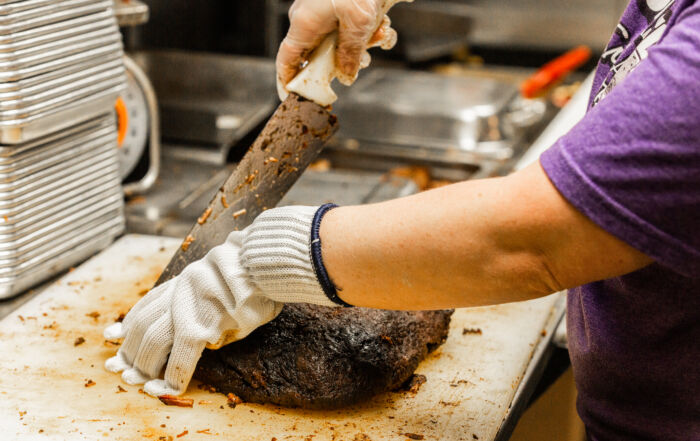Thawing Food with Food Safety in Mind
There comes a time in almost every foodservice operation where you must thaw food. Yes, I know there are those operations who have moved to fresh products only and don’t have a freezer in-house, but I am willing to bet that is more the exception than the norm. I am almost sure that anyone reading this blog who works in a foodservice operation can regurgitate what methods are acceptable to thaw food per the FDA Model Food Code. In case you don’t recall, I will discuss them briefly, but I wanted to spend some time covering these requirements a bit more in-depth – so you not only know WHAT to do, but the WHY we do it that way.
First, let’s review the food code requirements. There are three main methods in which food can be thawed by food code standards,
- Under refrigeration that maintains the food temperature of 41˚F (5˚C) or less.
- Completely submerged under running water at a water temperature of 70˚F (21˚C) or less, with sufficient velocity to agitate and float off loose particles, for a period of time that does not allow the food to raise above 41˚F (5˚C) or if raw animal food that is being thawed, to not allow the food to rise above 41˚F (5˚C) for more than 4 hours.
- As part of the cooking process.
Each method of thawing does have its advantages and disadvantages, and each operation, and perhaps each product within an operation, can utilize different thawing methods.
I am sure everyone reading this can agree that thawing food in the refrigerator is the best method of the three. But it is also the method that requires the most forethought and preplanning – something we can’t always account for in the foodservice environment. While most frozen product will require a minimum of 24 hours to thaw, large pieces of meat can require 24 hours for every five pounds of weight. And to cast aside the old wife’s tales you have heard, yes you can refreeze meat if it has been thawed in a safe manner in the refrigerator.
The second method is to use running water and that water should be under 70˚F. This method is certainly faster but does require a bit more effort on the part of the food handler and is somewhat wasteful of water. Before using this, be sure the product is packaged in a way that water will not permeate the package. This will help not only on the food safety side by helping to prevent cross contamination but will maintain peek quality. Why a water temperature below 70˚F? While the reason behind this should be obvious, using water over the 70˚F benchmark can cause the outside of the food to warm to unacceptable levels, which leaves it open to increased bacterial growth. The flow of water also must be sufficient to wash away any loose particles to limit potential cross contamination that could occur. Besides the food safety aspect behind running water, there is also a practical reason – when you use running water, even if the water is under 70˚F, you are constantly replenishing the supply of heat for the frozen food and thus it will cool more quickly.
Thawing food as part of the cooking process is an often-overlooked method. Perhaps due to cooking methods that are used, but certainly cooking a thin hamburger patty from frozen is viable option, whereas perhaps not so viable with a prime rib roast. This method would also include microwave thawing, which really just cooks the food at a reduce power level. For this reason, it is important to fully cook the product if you are using this method and to cool the product appropriately if you will not serve it immediately.
Each method of thawing does have its advantages and disadvantages, and each operation, and perhaps each product within an operation, can utilize different thawing methods. Whichever method you determine is correct for you, be sure you are doing it property and safety. When in doubt, reach out to your health inspector. I assure you that they would rather visit with you know about your methods than have a foodborne illness outbreak to contend with.
We are in the planning stages for our third SafeBites Webinar for 2022. If you have any topics you’d like to see us over, please drop me a note and let me know. Risk Nothing.
READ MORE POSTS
The Second Wave: Food Safety Myths That Deserve Your Attention
Walk into any commercial kitchen, and you'll find hardworking staff following protocols they have learned [...]
What Your Staff Gets Wrong About Food Safety (And How to Fix It)
Earlier this month, I was mindlessly scrolling through Facebook when I came across a post [...]
Your Guide to Approved Food Safety Training Programs in 2025
Early in my foodservice career, I persuaded the owners of the restaurants I managed to [...]
Thanksgiving Food Safety: Separating Fact from Fiction
Most blogs that I write are geared toward the foodservice professional preparing food in commercial [...]










